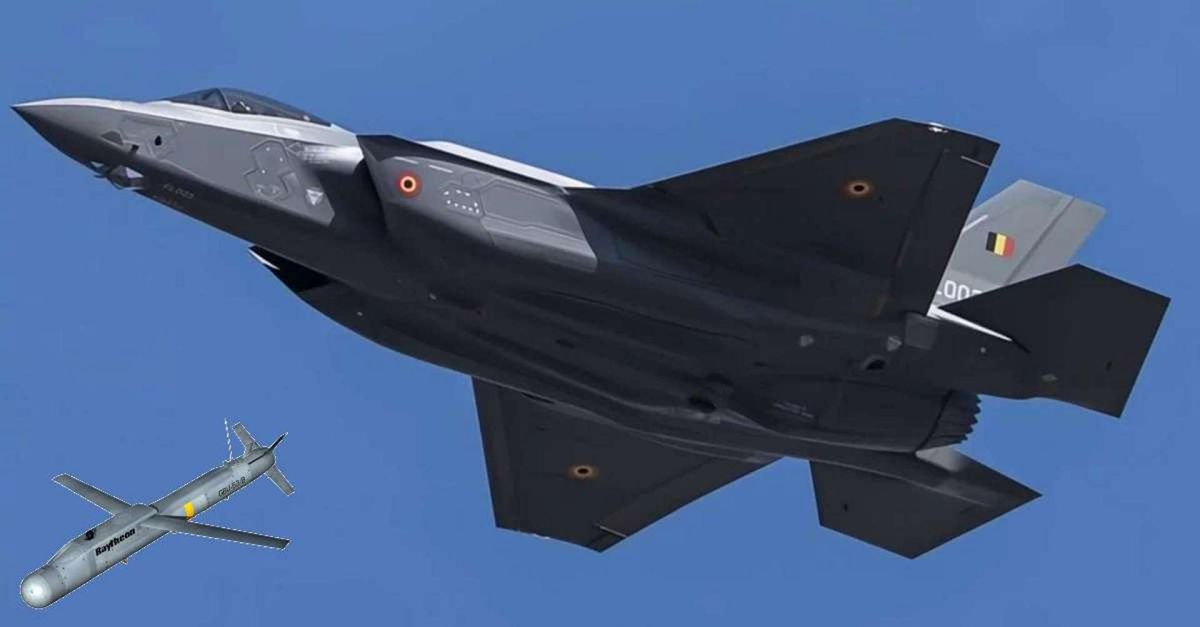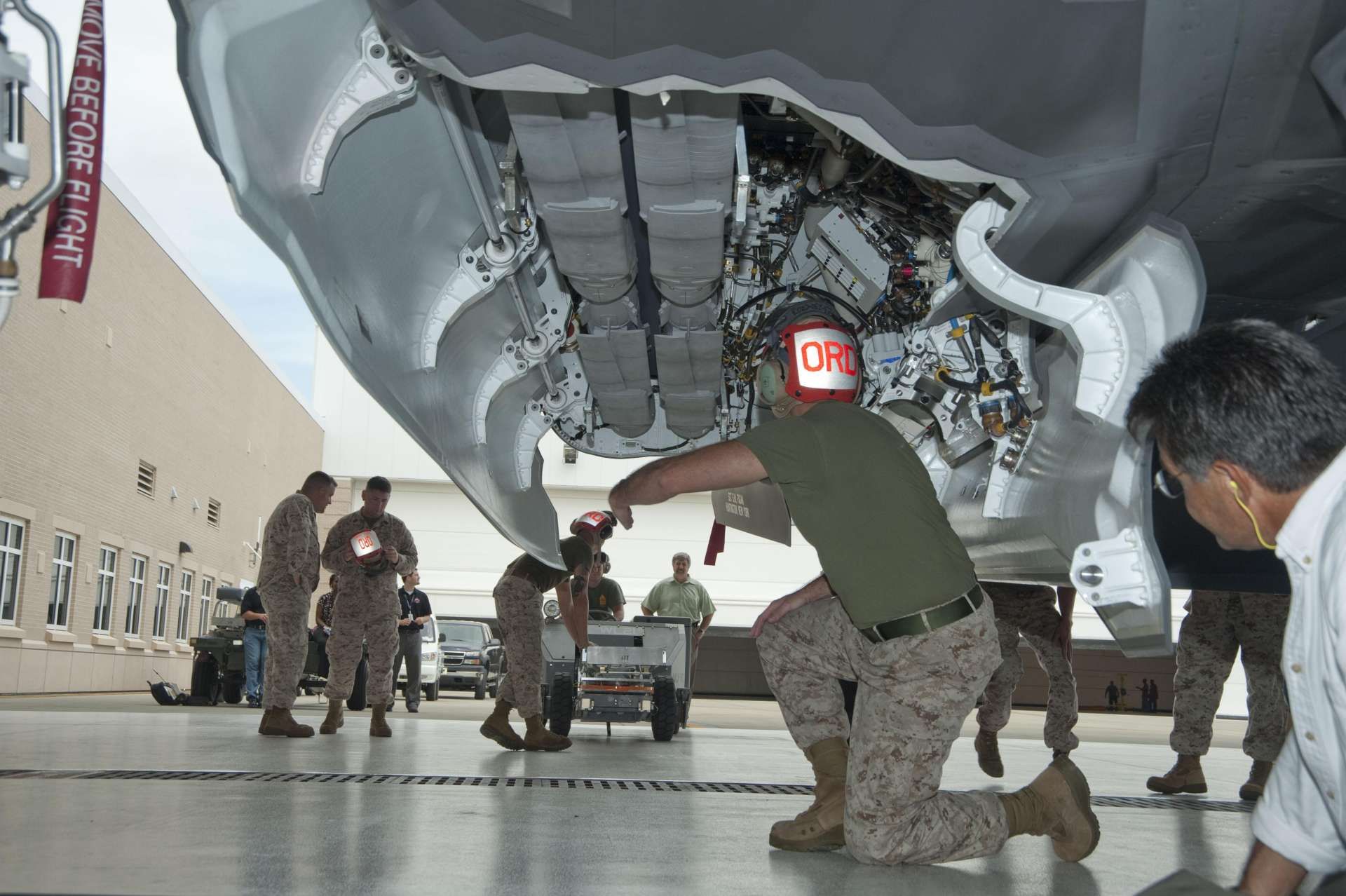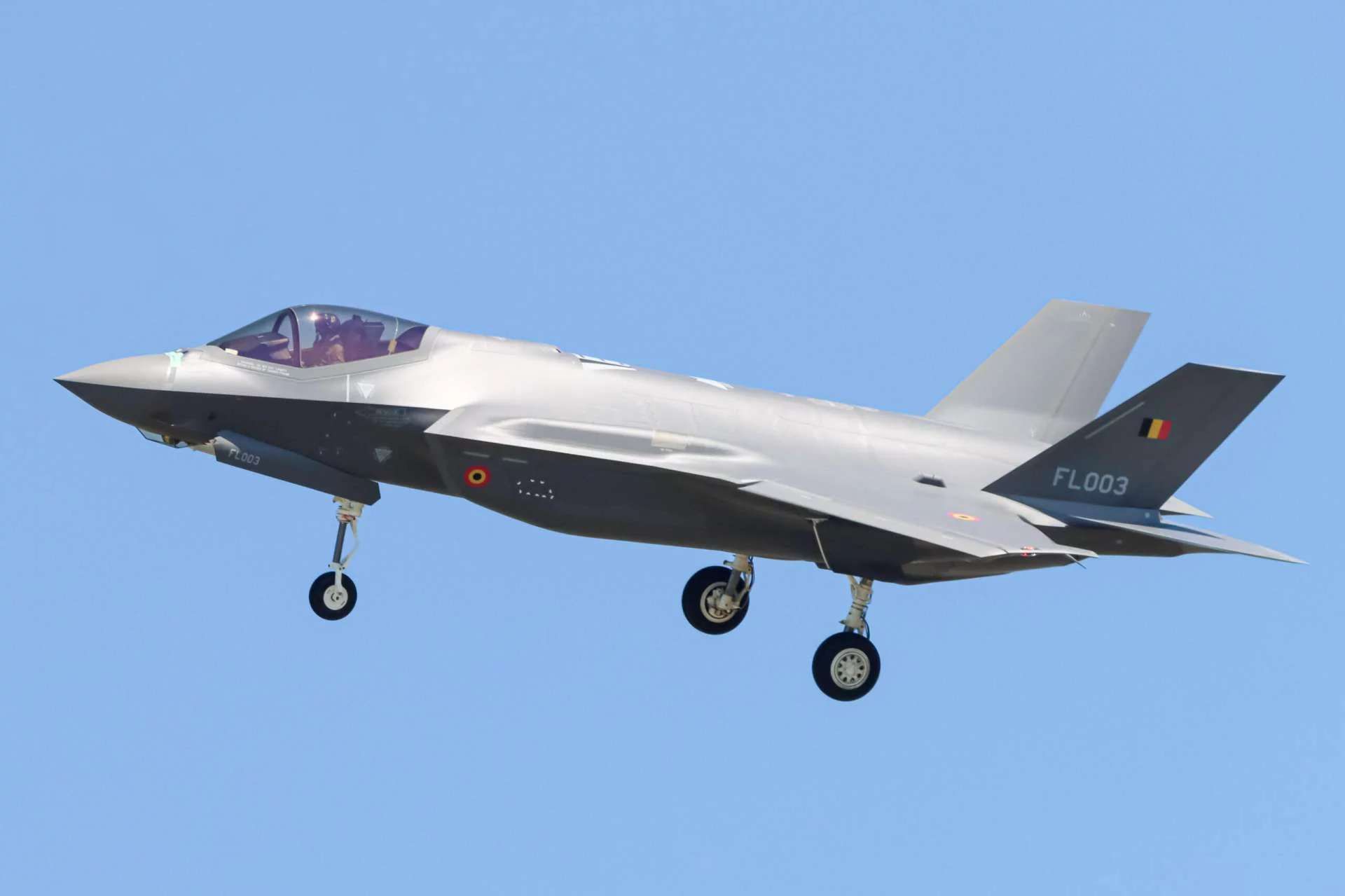Breaking News
Belgium to purchase $115 Million worth of US GBU-53/B bombs for its F-35 fighter jets.
On July 25, 2024, the US State Department approved a potential Foreign Military Sale to Belgium for the purchase of up to 196 GBU-53/B SDB-II All-Up-Rounds (AURs) Small Diameter Bomb-Increment II (SDB-II) and related logistics and program support, with an estimated cost of $115 million. Belgium's acquisition of the SDB-II aligns with the introduction of their new F-35A Lightning II stealth fighters, which are capable of carrying this bomb.
Follow Army Recognition on Google News at this link

Belgium will purchase up to 196 GBU-53/B SDB-II small-diameter bombs at an estimated cost of $115 million, likely for their new F-35A Lightning II stealth fighter.s (Picture source: Air Power Australia and Facebook/The military aviation pictures and history)
The GBU-53/B SDB-II, also known as StormBreaker, is an air-launched precision-guided glide bomb developed by Raytheon. It is designed for use in adverse weather conditions and can engage both moving and stationary targets. The bomb is equipped with a GPS/INS guidance system that allows it to receive updated target coordinates mid-flight via Link-16 or UHF communications. This capability enables airborne or ground controllers to provide in-flight target updates and abort missions if necessary. The SDB-II can be guided using imaging infrared, millimeter-wave radar, and digital semi-active laser, making it a versatile weapon in various combat scenarios.
The SDB-II weighs 93 kilograms and measures 1.78 meters in length and 18 centimeters in diameter. Its operational range is approximately 111 kilometers for stationary targets and 74 kilometers for moving targets. The bomb's warhead, weighing 48 kilograms, combines blast and fragmentation effects, making it effective against a range of targets, including infantry, armor, buildings, and patrol boats. The weapon's innovative use of uncooled imaging infrared technology reduces costs and enhances its effectiveness.

The SDB-II can be guided using imaging infrared, millimeter-wave radar, and digital semi-active laser, making it an interesting weapon for various combat scenarios. (Picture source: US Navy)
Belgium's acquisition of the SDB-II coincides with the introduction of their new F-35A Lightning II stealth fighters. The Belgian Air Force recently celebrated the inaugural flight of its first F-35A, part of a 34-aircraft order aimed at replacing the aging fleet of F-16 Fighting Falcons. The new aircraft features the Belgian roundel and national flag, following a subdued color scheme for operational purposes.
Belgium's acquisition of the F-35A includes not only the aircraft but also engines, mission simulators, and training programs for pilots and maintenance crews, with a total investment of $6.53 billion. The delivery schedule, initially planned for four jets per year from 2023 to 2030, was delayed due to the COVID-19 pandemic, affecting production. The first two jets were expected by the end of 2023, with two more in early 2024. The first batch of Belgian F-35s is currently undergoing testing at Luke Air Force Base in Arizona.
Belgium opted for subdued national markings on its F-35s, similar to those used by Denmark and Poland, to enhance operational stealth. The aircraft will initially be used for training in the U.S., with the first F-35 expected to arrive in Belgium at Florennes Air Base in 2025 and additional jets at Kleine-Brogel starting in 2027. With this purchase, Belgium joins twelve other European countries in operating the F-35, contributing to NATO's aerial defense strategy.

The F-35A Lightning II, the Conventional Take-Off and Landing (CTOL) variant of the F-35 series, is the smallest, lightest, and fastest among the F-35 variants, intended to replace older aircraft such as the F-16 Fighting Falcon and the A-10 Thunderbolt II. (Picture source: Instagram/Gherardo Fontana)
The F-35A Lightning II, the Conventional Take-Off and Landing (CTOL) variant of the F-35 series, is the smallest, lightest, and fastest among the F-35 variants, intended to replace older aircraft such as the F-16 Fighting Falcon and the A-10 Thunderbolt II. The F-35A features stealth capabilities using low-maintenance structural fiber mats instead of traditional stealth coatings, reducing its radar cross-section and making it less detectable by enemy radar.
The F-35A includes the Autonomic Logistics Global Sustainment (ALGS) and the Autonomic Logistics Information System (ALIS), along with a Computerized Maintenance Management System (CMMS), aimed at ensuring high aircraft availability with minimal maintenance manpower. Its flight control system uses electro-hydrostatic actuators and a power-by-wire flight control system, reducing the need for traditional hydraulic systems and increasing reliability. The aircraft is powered by the Pratt & Whitney F135 mixed-flow after-burning turbofan engine, delivering a maximum thrust of 43,000 lbf and an intermediate thrust of 28,000 lbf, with an integrated power package that combines auxiliary power, emergency power, and environmental control.
The F-35A's cockpit includes a Helmet-Mounted Display System (HMDS) that projects critical flight data directly onto the pilot's visor, eliminating the need for a traditional head-up display. The aircraft integrates data from onboard and off-board sensors to enhance situational awareness and target identification, supported by advanced avionics such as the AN/APG-81 AESA radar and the AN/AAQ-37 Distributed Aperture System (DAS). Designed for air superiority and strike missions, the F-35A is capable of air-to-air combat, air-to-ground attacks, and close air support, with capabilities in stealth, payload, range on internal fuel, avionics, operational effectiveness, supportability, and survivability.


























